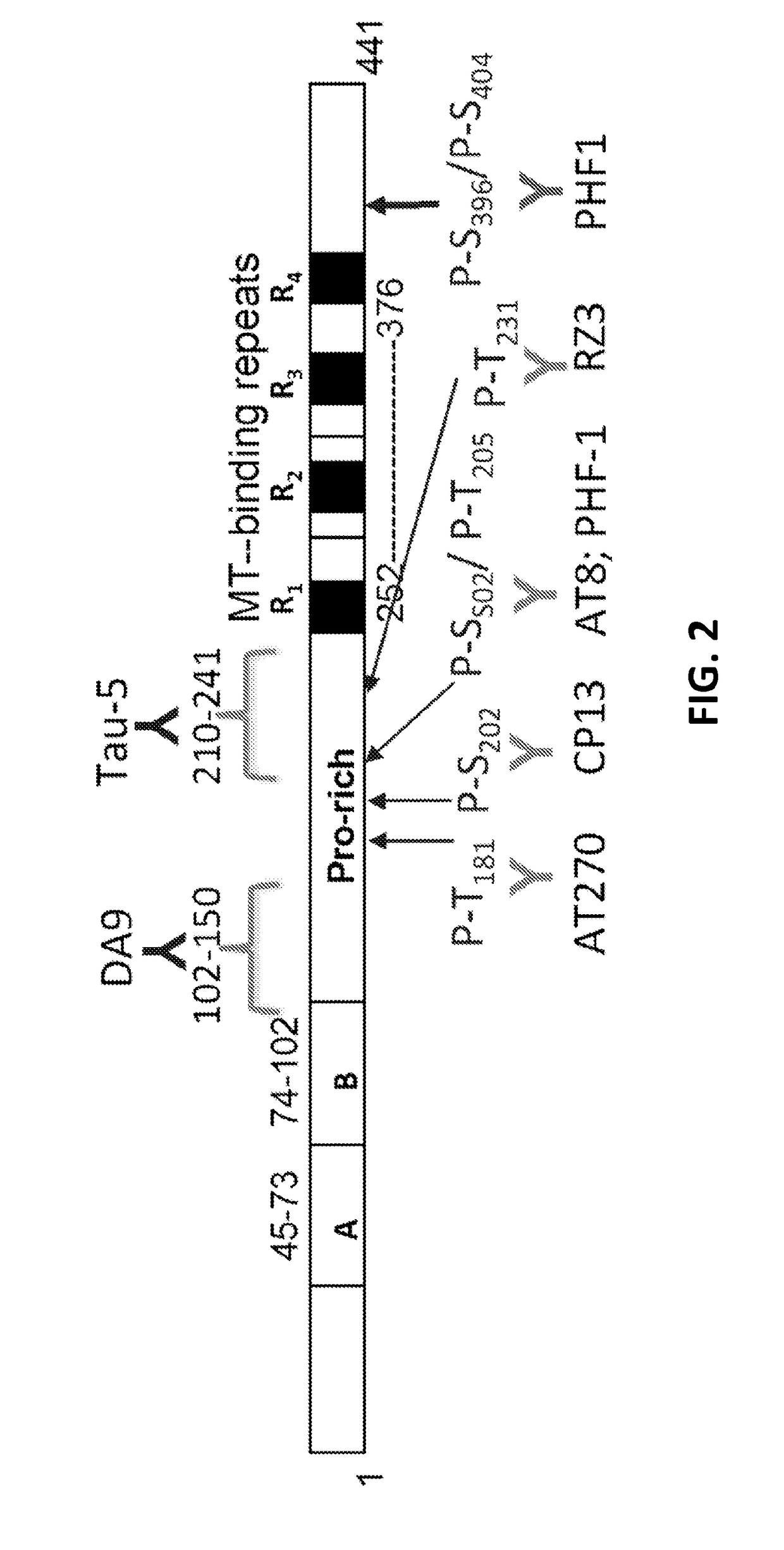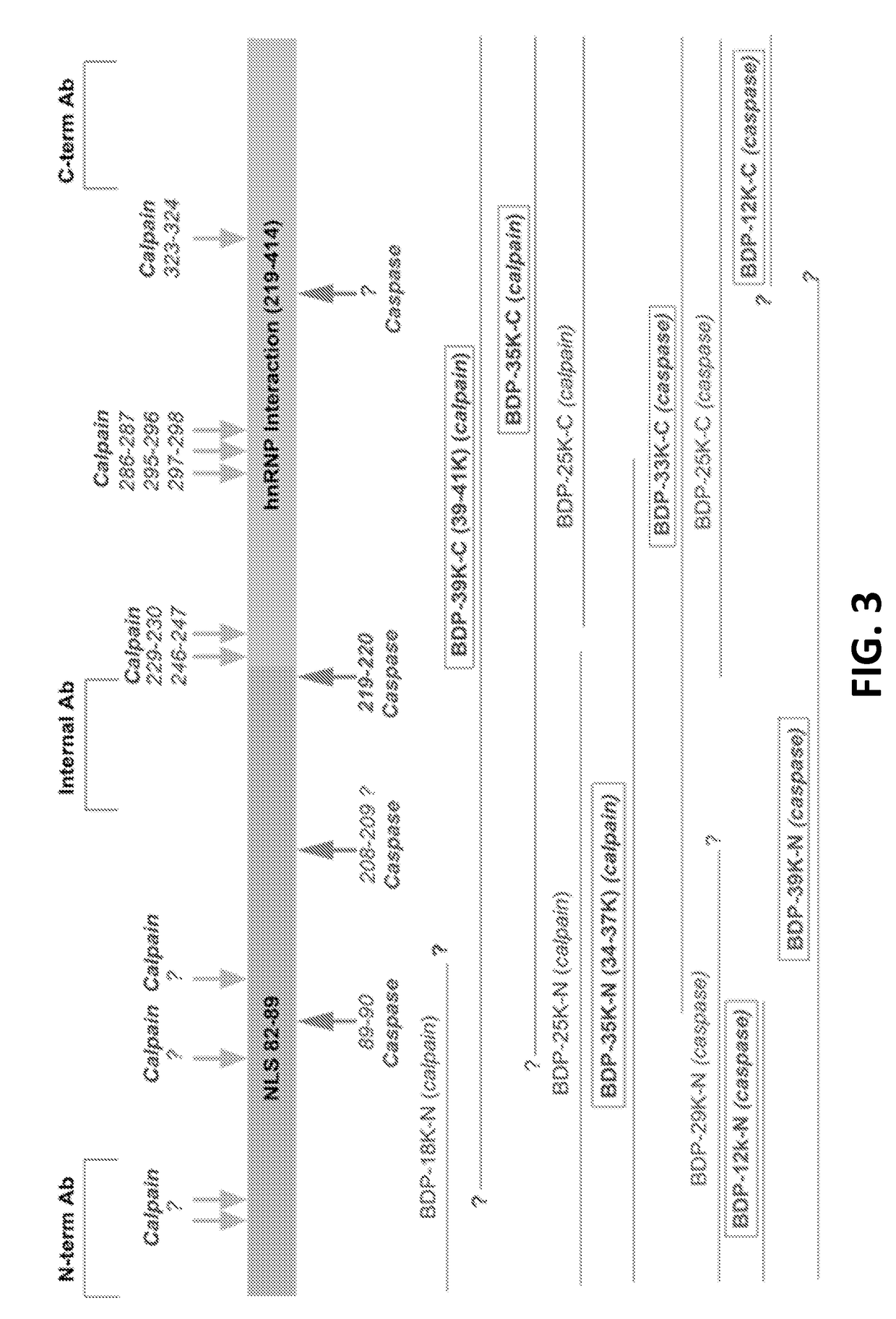Protein biomarkers for acute, subacute and chronic traumatic injuries of the central nervous system
a technology of traumatic injury and protein, applied in the field of biological diagnostics, can solve the problems of inability to assess difficulty in assessing the severity of the injury, and loss of sensory and motor functions after injury
- Summary
- Abstract
- Description
- Claims
- Application Information
AI Technical Summary
Benefits of technology
Problems solved by technology
Method used
Image
Examples
example 1
[0075]Mouse controlled cortical impact (CCI) for severe TBI: A CCI device was used to model TBI. CB57BL / 6 mice (male, 3-4 months old, Charles River Laboratories) were anesthetized with 4% isoflurane in oxygen as a carrier gas for 4 minutes, followed by maintenance anesthesia of 2-3% isoflurane. After reaching a deep plane of anesthesia, mice were mounted in a stereotactic frame in a prone position, and secured by ear and incisor bars. Core body temperature will be monitored continuously by a rectal thermistor probe and maintained at 37±1° C. by placing an adjustable temperature controlled heating pad beneath the rats. An integrated Impactor One Stereotaxic impactor device for CCI (Leica inc.) is used. The impactor is electromagnetically controlled. Animals are mounted in a stereotactic frame in a prone position and secured by ear and incisor bars. A midline cranial incision was made and a unilateral (ipsilateral) craniotomy (3 mm diameter) was performed adjacent to the central sutur...
example 2
[0078]FIG. 4 shows the detection of TAR DNA-binding protein 43 (TDP-43, transactive response DNA binding protein 43 kDa and its breakdown products (BDPs-39 kDa and 35, 25 kDa) (FIG. 3) in brain (cortex) tissue lysate in mice following TBI (controlled cortical impact) and blast overpressure brain injury). The detection method shown is quantitative immunblotting (western blots). Other methods such as sandwich ELISA method or amplified sandwich ELISA can also be used. The data indicate that TDP-43 BDPs are released from injured brain cells and tissue into biofluids such as cerebrospinal fluid (CSF) (FIG. 5) and / or blood, including serum and plasma).
example 3
[0079]FIG. 5 shows the detection of intact TDP-43 and BDPs (35K, 25K) released into human CSF after severe TBI (n=21) over normal controls (n=12). This TDP-43 and BDP release pattern is comparable to alphaII-spectrin BDP (SBDP150, 145) release into CSF after TBI in humans. The detection method used is quantitative immunblotting (western blots). Other methods such as sandwich ELISA method or amplified sandwich ELISA can also be used, as demonstrated by SBDP. TDP-43 and its BDPs are likely released from injured brain cells and tissue into biofluids such as cerebrospinal fluid (CSF) and blood, including serum and plasma, causing the biofluid levels of TDP-43 and its BDPs to rise after CNS-injury. This example also demonstrates that TDP-43 and BDP quantification tests can distinguish TBI from control subjects using biofluids with the first 24 h, and possibly longer.
PUM
 Login to View More
Login to View More Abstract
Description
Claims
Application Information
 Login to View More
Login to View More - R&D
- Intellectual Property
- Life Sciences
- Materials
- Tech Scout
- Unparalleled Data Quality
- Higher Quality Content
- 60% Fewer Hallucinations
Browse by: Latest US Patents, China's latest patents, Technical Efficacy Thesaurus, Application Domain, Technology Topic, Popular Technical Reports.
© 2025 PatSnap. All rights reserved.Legal|Privacy policy|Modern Slavery Act Transparency Statement|Sitemap|About US| Contact US: help@patsnap.com



